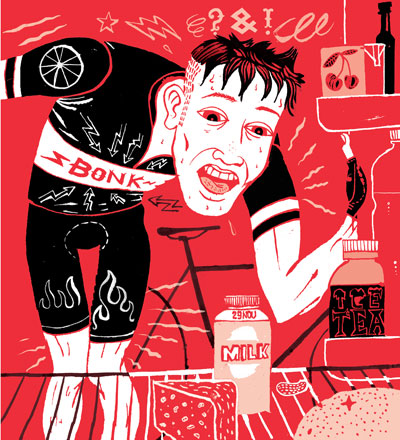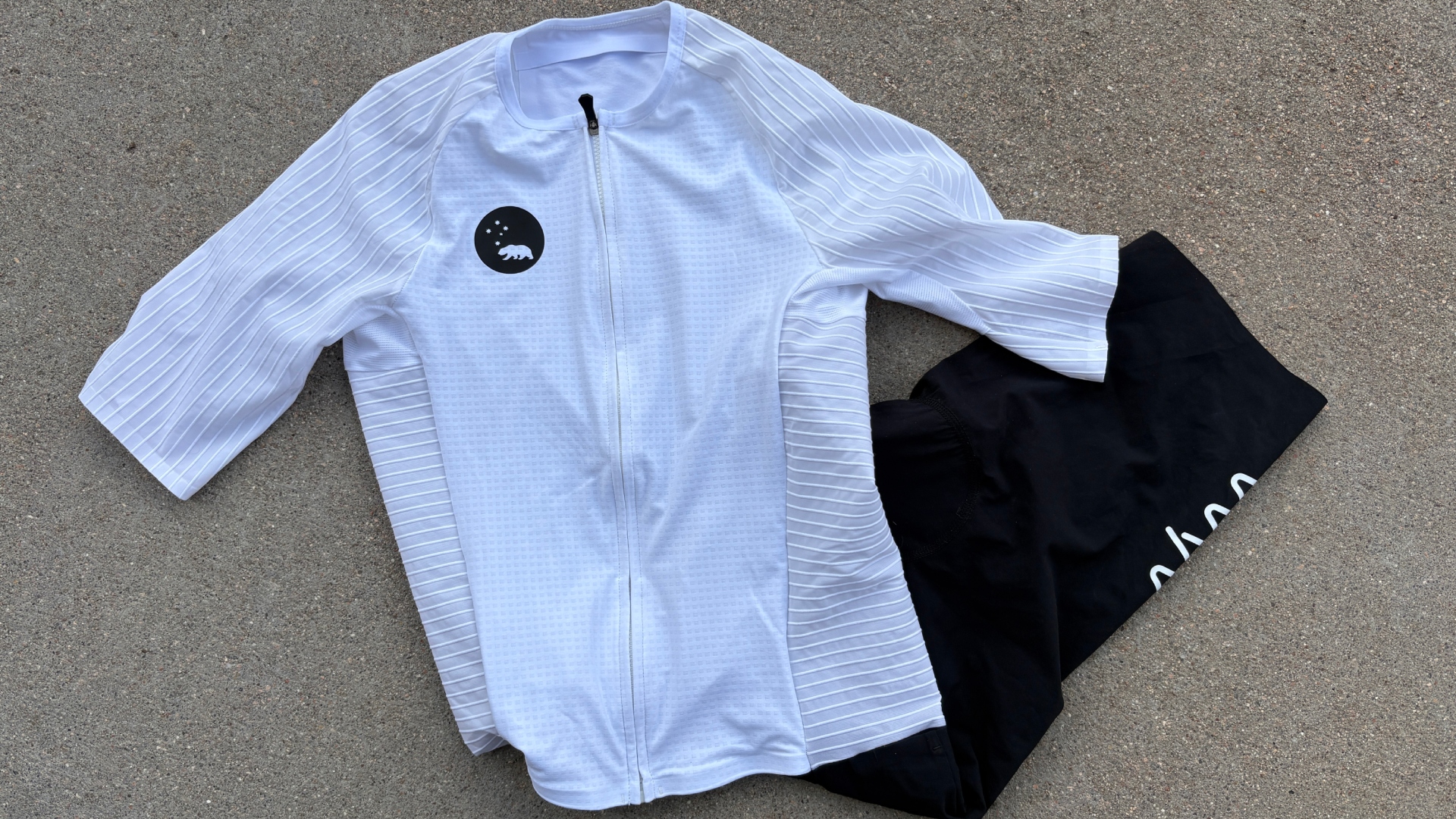Train right, eat better: recovery and training adaptations

There are numerous ways in which we can enhance performance in cycling. Although training is by far the most effective way of enhancing performance, other aspects such as cycling equipment, clothing, altitude/hypoxic tents, breathing devices, and nutrition can all add further benefit.
Performance nutrition is an interesting area of research as the fuels you put in your body can have a huge effect on how you feel and how your body performs. It would be a shame to spend a considerable amount of time training hard only to take the edge of its impact on your performance by simply eating the wrong foods at the wrong times.
Nutrition therefore, seems to be an area where a cyclist could gain some ‘quick wins' without spending large sums of money. The purpose of this article is to evaluate the science of how certain dietary practices can enhance adaptations to training and practical recommendations are summarised in Table 1.
Not all training sessions are the same. Therefore, what you eat after each session should not be the same. However, very few athletes actually adapt their diet depending on the type and amount of training carried out, a concept known as periodised nutrition.
More specifically, what you eat, the quantities you eat it in, when you eat, and how often you eat it can have a substantial effect on the adaptation you get from the training you have done.
Recovery and adaptations
Most endurance athletes such as cyclists tend to place a large emphasis on carbohydrate intake before, during and after training. Ingesting 1.5g of carbohydrate per kg of body weight within 30 minutes after training has been shown to lead to a greater rate of muscle glycogen re-synthesis in comparison to ingesting it several hours afterwards (Ivy, 1998).
Get The Leadout Newsletter
The latest race content, interviews, features, reviews and expert buying guides, direct to your inbox!
This is mainly due to the muscles being more sensitive to insulin post-exercise. Therefore, if you are training more than once a day and training on subsequent days, it is important that you consume the recovery drink within this 30-minute window when the muscles are at their optimal for absorption.
The amount of glycogen depleted during training depends on the intensity and duration of the session, but typically the harder and longer the session is, the more glycogen is utilised.
Therefore after strenuous training sessions, if optimal glycogen repletion is the main goal, consuming 1.5g/kg during the first 30 minutes and then consuming 1g/kg again every 2 hours for 4 to 6 hours has been shown to be effective in maximising glycogen re-synthesis after training (Jentjens and Jeukendrup, 2003).
Combining carbohydrate and protein in a ratio of 3:1 after training has been found to further enhance glycogen re-synthesis and reduce muscle damage (Ivy, 2002).
Protein doesn't just play a role in enhancing glycogen re-synthesis after training but it also plays an important role when it comes to muscle recovery. A single bout of cycling training will stimulate protein synthesis and depending on the intensity and volume will cause a certain amount of protein breakdown.

Although this process is necessary in improving muscular strength and reconditioning the muscle, poor nutrition after training can impair this adaptation response. For instance, if insufficient protein and/or inadequate protein are consumed after exercise, protein synthesis is impaired, protein breakdown is increased and subsequently muscle protein gains are reduced.
If this process continues after multiple bouts of training, over time the muscle reconditioning process is impaired and you may not get the necessary gains from the training sessions done. However, by consuming the correct nutrients at certain times and following some basic guidelines after training can enhance adaptations.
Dual fuel
Consuming protein after training is just as important as carbohydrate. Both the type and amount of protein consumed after exercise are important. Evidence suggests that when you consume 20g of protein after exercise, rates of muscle protein synthesis are maximised (Moore et al., 2009).
The type of protein is also important as evidence suggests that consuming whey and casein protein are superior to soy protein after training as they offer a greater anabolic advantage (Paul, 2009). Milk contains both whey and casein protein and seems to be a good source of convenient protein to consume after exercise and can also help to promote rehydration.
The timing of protein ingestion is also an important factor in promoting muscle reconditioning and taking on board protein immediately after training seems to offer a greater benefit than consuming it several hours after (Beelen, 2011).
If one of the goals is to minimise muscle loss during training, there is evidence to suggest that carbohydrate and protein co-ingestion in a ratio of 3:1 before and during prolonged exercise can increase protein synthesis and preserve muscle mass (Beelen, 2011).
Antioxidants and Training Adaptations
Strenuous endurance exercise has been found to cause oxidative stress by increasing free radical and reactive oxygen species production, and both damage our cells. Vitamins A, C, E, selenium, and beta-carotene are just some dietary antioxidants that can help to protect the body against free radicals by neutralising them.
Antioxidants in the form of polyphenols and anthocyains are also found in foods such as tea, vegetables and fruits. It has been proposed that dietary antioxidants could also reduce inflammation and muscle soreness after hard training which could be beneficial to a cyclist as he or she could recover quicker. This enhanced recovery could allow the rider to increase their training volume and intensity thereby enhancing performance.
If antioxidants can help to protect the body from free radicals, reactive oxygen species, reduce inflammation and muscle soreness, could higher doses of antioxidants after intense training offer beneficial effects for overall recovery? Unfortunately, the answer is not straightforward as there is a great deal of conflicting scientific evidence on whether antioxidants can enhance or actually impair training adaptations.
Some studies haven't been well controlled; the dosages studies vary greatly, and the way some of the studies have been conducted are just some factors that explain why this area of research is often contradictory.
Sigle vitamin studies
Some of the early research on antioxidants and recovery was conducted on single vitamin antioxidants such as vitamin C and vitamin E.
Several studies investigated whether taking Vitamin C in doses of 400-1000 mg per day (666-1700% above the recommended daily amount!) over 1-2 weeks enhanced recovery and reduced muscle soreness after training.
A few of these studies found that vitamin C supplementation reduced muscle damage and muscle soreness after strenuous training (Bryer and Goldfarb, 2006; Kaminsky and Boal 1992) but others found no positive effect on recovery (Connolly et al., 2006).
The studies done on vitamin E show a similar picture and these studies have also used very high doses (3500-5500% above the recommended daily amount!) over periods of 1-4 weeks. One study found that vitamin E in doses of 1200IU (5500% over the RDA) over 12 weeks reduced markers of muscle damage (Sacheck et al. 2003) however another study that used the same dosage over 4 weeks found no effect on muscle damage, performance or muscle soreness (Beaton et al. 2002).

Some studies have investigated whether there is any positive benefit of taking a combination of vitamin C and vitamin E and the majority of these studies found little benefit on performance, no effect on recovery and muscle damage (Goldfarb et al. 1990; Mastakoudis et al. 2006).
Recent research
More recent studies have focused on antioxidants such as phytochemicals and anthocyains found in fruit concentrates, and Montmorency cherries in particular have received a great deal of attention from scientists.
One really well controlled study found that taking a Montmorency cherry juice concentrate before and after a marathon found that it helped aid recovery following the run by reducing inflammation and enhancing recovery of muscle function (Howatson et al. 2009). Similar findings of Montmorency cherry concentrate have since been found on strength training.
Montmorency cherry juice consumption was found to improve recovery of muscle strength after intensive exercise (Botwell et al., 2011). Some of these findings have since been replicated using other fruit concentrates such as pomegranate juice (Trombold et al., 2011).
So it seems that taking antioxidants from fruit concentrates is more effective than taking them in the form of a single vitamin such as C and E in enhancing recovery after an intense training session.
However, more recently, scientists have discovered that although antioxidants may help in neutralising free radicals, reducing inflammation and muscle soreness, could they be counterproductive in other ways.
It has been suggested that the production of reactive oxygen species (ROS) and free radicals is necessary and an important part of the adaptation process. More specifically, they play a key role in signalling and activating the endurance training adaptations.
For example, Gomez-Cabrera and colleagues (2008) carried out a study using vitamin C supplementation in doses of 1000mg (1667% above the RDA) over an eight-week period of endurance training.
They found that after the supplements were given at the end of the training period, vitamin C actually hampered endurance capacity. Similarly, there is other evidence that has also found that antioxidant supplements during exercise may be counterproductive by impairing the adaptation response (Ristow et al., 2009).
Good or bad?
The debate continues amongst the scientific community on whether antioxidants can enhance recovery after training or actually be counterproductive and impair training adaptations. There isn't sufficient evidence to completely dismiss and rule out the use of antioxidants and similarly it would be hasty to take them after every training session.
Nonetheless, there are certain circumstances where strategic use of antioxidant supplementation can be beneficial. For example, during important key stage races where quick recovery after each stage is more important the training adaptation. Similarly, during high-altitude training/racing where free radical production is higher than normal, antioxidants can certainly benefit the cyclist.
In summary, there are some simple dietary strategies that when followed can help maximize adaptation to the training stimulus and these are summarised in Table 1.
Dietary Strategies to Enhance Training Adaptation
- The recovery drink after training should contain 20g of whey protein
- Consume carbohydrate in doses of 1.5 g per kg of body weight immediately after training
- If glycogen re-synthesis is the main goal (i.e. during stage races) then after the recovery nutrition continue consuming 1g/kg of carbohydrate every couple of hours 4 hours after the session
- To maximise protein synthesis and minimise muscle breakdown consume 10g of protein before training and during long training sessions (>3 hours) consume an addition 10g of protein every few hours.
- Strategic use of antioxidants during key stage races and whilst at altitude can reduce muscle damage and enhance recovery however, antioxidants should not be used on a regular basis as they could impair adaptations to training.
This article was first published in the November 22 issue of Cycling Weekly. You can also read our magazines on Zinio and download from the Apple store.

Thank you for reading 20 articles this month* Join now for unlimited access
Enjoy your first month for just £1 / $1 / €1
*Read 5 free articles per month without a subscription

Join now for unlimited access
Try first month for just £1 / $1 / €1
Founded in 1891, Cycling Weekly and its team of expert journalists brings cyclists in-depth reviews, extensive coverage of both professional and domestic racing, as well as fitness advice and 'brew a cuppa and put your feet up' features. Cycling Weekly serves its audience across a range of platforms, from good old-fashioned print to online journalism, and video.
-
 Save £42 on the same tyres that Mathieu Van de Poel won Paris-Roubaix on, this Easter weekend
Save £42 on the same tyres that Mathieu Van de Poel won Paris-Roubaix on, this Easter weekendDeals Its rare that Pirelli P-Zero Race TLR RS can be found on sale, and certainly not with a whopping 25% discount, grab a pair this weekend before they go...
By Matt Ischt-Barnard
-
 "Like a second skin” - the WYN Republic CdA triathlon suit reviewed
"Like a second skin” - the WYN Republic CdA triathlon suit reviewed$700 is a substantial investment in a Tri Suit, and it is, but you’ll definitely feel fast in it
By Kristin Jenny